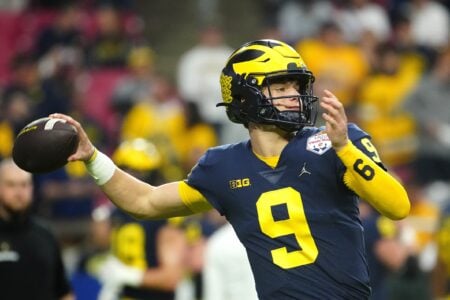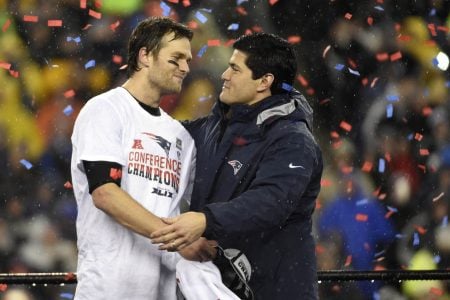Since I've been pitching number of plays as the superior stat, I'll provide them, quick and dirty style:
Code:
Plays on Offense, 2011
Patriots 1,082
Giants 1,028
Median 1,015
Pats avg. 68
Giants avg. 64
Median avg. 63
Plays on Defense, 2011
Patriots 1,064
Giants 1,072
Median 1,010
Pats avg. 67
Giants avg. 67
Median avg. 63
Super Bowl XLVI
Patriots 62
Giants 71
In the regular season, both the Giants and the Patriots had more plays their the median teams did. The Patriots had ~9 more plays per game than the median, and the Giants ~5 more plays. The difference was entirely on offense. The Giants were actually on defense more than they were on offense during the regular season.
The Super Bowl, with 133 scrimmage plays, was about as fast as each team normally plays (Giants, 131; Patriots, 135), and over league median (126 plays).
So the Giants, despite dominating Time of Possession 37:05 to 22:55, did not actually slow the game down.
Perhaps I should clarify what I mean by slowing the game down - I'm not talking about pace, I'm referring to the number of possessions, and its resulting effect on the perceived "length" of the game. Just two weeks prior, the NFCCG which even before OT approached twice as many total possessions (excluding kneeldowns) than the Super Bowl. I would call that game "longer."
If the average number of possessions in an NFL game is 22, I call anything under that "shorter" and anything more "longer." Maybe that's poorly worded on my part, but for the sake of this thread and my OP, that's what I'm going with for now.
The number of plays stat is telling to the pace of the game, but I don't think number of plays tells a better story in terms of indicating success. Even putting aside the factor that Deus mentions, there are other issues. Number of plays doesn't take into account field position. Taking SB46, consider the Patriots had a 10 play, 60 yard drive and an 11 play 48 yard drive that combined for only three points. Field position factored into the latter drive, as they started from their 8. They also racked up 14 plays on one drive when they were forced to go 98 yards for a score to end the half.
That's 35 plays in just three drives, and 10 points to show for it. (Side note: we can see how costly settling for a field goal on that first drive was, with possessions at such a premium in this game.)
(See Ivanvamp's posts for a nice breakdown of how field position factored in heavily.)
You can only get seven points on a possession, so the number of possessions in the game is extremely important - it determines the amount of points you can score.
No matter how many plays the Giants ran, they did their damage in 8 possessions, and only gave the Patriots nine cracks at it, one of which they wasted with a safety, and another which was largely pure desperation at the end of the game. The Pats didn't have many shots at it. And both the offense and defense is to blame for it, but it is - to me - the biggest reason they lost.
Curious where you got the Plays stat - that's good stuff. Thanks for bringing that to the table, I was looking for that (couldn't find it on footballoutsiders or the other usual suspects). If you can give me the link, I'd be curious to see all teams and compare that to the number of drives, one could derive pace of play for each team.

















